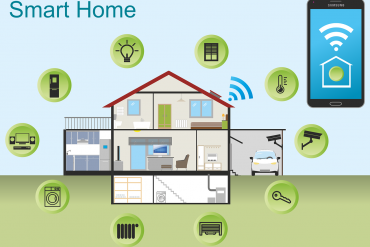The global focus on sustainability and environmental conservation has increased demand for eco-friendly roofing solutions. From reducing energy consumption to minimising carbon footprints, the roofing industry is now embracing innovative technologies and materials to meet the growing needs of environmentally-conscious consumers. This article will explore the many benefits of eco-friendly roofing solutions, from their environmental impact to their long-term cost savings for homeowners and businesses. Stay tuned to discover how you can positively impact the planet while enhancing the aesthetics and functionality of your property.
Benefits of Eco-Friendly Roofing Materials
Eco-friendly roofing materials such as corrugated PVC sheets offer many benefits beyond reducing energy consumption. One of the key advantages is their positive impact on the environment. Sustainable roofing options are often made from recycled materials or are recyclable, which helps reduce waste and lessen the demand for new raw materials. In addition, many eco-friendly roofing materials are designed to improve a building’s energy efficiency, reducing the need for heating and cooling systems and lowering greenhouse gas emissions.
From an economic standpoint, eco-friendly roofing solutions can also provide significant cost savings over the long term. While the upfront cost of sustainable roofing materials may be slightly higher than traditional options, the savings on energy bills and maintenance can more than offset the initial investment. In addition, many eco-friendly roofing materials have a longer lifespan and require less frequent repairs or replacements, leading to lower overall expenses for homeowners and businesses. Ultimately, choosing eco-friendly roofing materials is not only beneficial for the environment but can also result in substantial financial savings.
Role of Lightweight Sheets in Green Construction
The role of lightweight sheets in green construction cannot be overstated when considering the overall energy consumption of a building. Construction projects can significantly reduce the energy required to transport, handle, and install these materials by using lighter materials, such as lightweight roofing sheets. This, in turn, leads to lower carbon emissions and a more sustainable building process. Additionally, lightweight sheets often have a higher thermal efficiency, which means they can help reduce the energy needed for heating and cooling, further decreasing the overall energy consumption of the building.
Using lightweight sheets in green construction can also have a positive impact on the longevity of the building. These materials are often more durable and resistant to weathering, reducing the need for frequent repairs and replacements. This not only saves time and money for homeowners and businesses but also reduces the environmental impact of the construction industry. Overall, incorporating lightweight sheets into green construction projects is a win-win solution that can help reduce energy consumption, minimise carbon footprints, and create a more sustainable built environment for future generations.
Incorporating Solar Panels with Eco-Friendly Roofing
Incorporating solar panels with eco-friendly roofing is a smart and sustainable choice for homeowners and businesses looking to reduce their energy consumption and carbon footprint. When considering a new roofing installation, working with a roofing contractor with experience integrating solar technology is important. They can help determine the best placement for solar panels on your roof to maximise sun exposure and energy production.
One tip for integrating solar panels with eco-friendly roofing is choosing roofing materials compatible with solar panel installation. For example, metal roofs are a popular choice for solar panel installations due to their durability and ability to support the weight of the panels. Integrating solar panels with cool roof materials can also help maximise energy efficiency and reduce cooling costs.
Another tip is to consider the angle and orientation of your roof when installing solar panels. South-facing roofs typically receive the most sunlight throughout the day, making them ideal for solar panel installations. Working with a professional roofing contractor can help ensure that your solar panels are positioned to capture the maximum amount of sunlight, increasing energy production and cost savings over time. Incorporating solar panels with eco-friendly roofing can positively impact the environment while saving money on your energy bills.
Recyclability and Environmental Impact
Recyclability is a key factor to consider when evaluating the environmental impact of roofing materials. Understanding the lifecycle of roofing materials is crucial in determining their recyclability and overall sustainability. Certain roofing materials, such as metal and asphalt shingles, can be recycled at the end of their lifespan, reducing waste in landfills. Homeowners and businesses can minimise their environmental footprint and contribute to a more sustainable future by choosing recyclable roofing materials.
The environmental impact of roofing materials goes beyond just their recyclability. Factors such as energy efficiency, durability, and production processes all play a role in determining how eco-friendly a roofing material is. For example, choosing reflective roofing materials can help reduce energy consumption by keeping buildings cooler in the summer, thus lowering the demand for air conditioning. Additionally, selecting durable roofing materials that require less frequent replacement can help minimise resource consumption and waste generation. By considering the environmental impact of roofing materials throughout their lifecycle, consumers can make informed decisions that benefit both the planet and their wallets.





